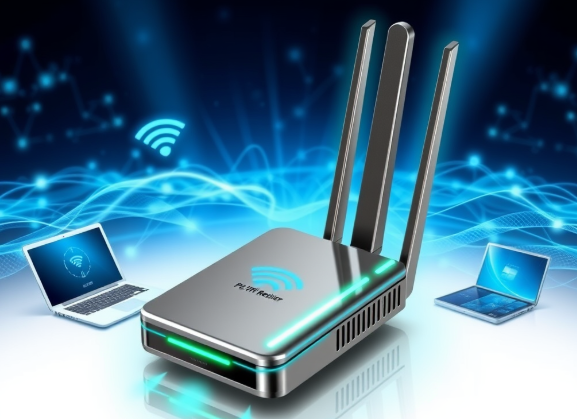Introduction
In today’s digital age, a stable and fast internet connection is essential for both personal and professional activities. Whether you’re streaming your favorite shows, engaging in online gaming, or attending virtual meetings, having a reliable WiFi connection can make a significant difference in your experience. For many desktop PC users, a WiFi receiver is a crucial component that facilitates wireless connectivity. However, with numerous options available in the market, selecting the right WiFi receiver can be overwhelming. This blog post aims to guide you through the key factors to consider when choosing a WiFi receiver for your PC, helping you make an informed decision that meets your specific needs.
Understanding WiFi Receivers
A WiFi receiver, also known as a wireless network adapter, is a device that enables your PC to connect to a wireless network. These adapters can be built into the motherboard or added as external devices. They come in various forms, including USB adapters and PCIe cards. Understanding the differences between these types is essential when selecting the right receiver for your setup.
USB WiFi adapters are portable and easy to install, making them a popular choice for users who may need to switch between devices. They plug directly into a USB port, allowing for immediate connectivity. On the other hand, PCIe WiFi cards are installed directly onto the motherboard, offering potentially better performance and speeds due to their direct connection to the system’s resources.
Key Factors to Consider
When it comes to choosing the right WiFi receiver for your PC, several factors come into play. One of the first considerations is the WiFi standard supported by the adapter. WiFi technology has evolved significantly over the years, leading to various standards such as 802.11n, 802.11ac, and the latest 802.11ax, commonly known as WiFi 6. The newer the standard, the better the performance, speed, and range. If you want to future-proof your setup, selecting an adapter that supports the latest standard is advisable.
Another critical aspect is the speed rating of the WiFi receiver. This rating indicates the maximum speed the adapter can handle when connected to a network. For instance, an adapter with a speed rating of 1300 Mbps will offer faster speeds than one rated at 300 Mbps. Consider your internet plan and usage patterns when choosing a speed rating; opting for a receiver with a higher rating can provide better performance, especially if multiple devices are connected to the same network.
Range is yet another important factor. Depending on the layout of your home or office and the distance between your PC and the router, you may require an adapter with extended range capabilities. Some adapters are designed with external antennas that enhance signal strength and improve coverage. If you live in a larger space or have multiple walls between your PC and the router, investing in a receiver with better range is a wise choice.
Additionally, consider the security features of the WiFi receiver. Modern adapters support various encryption standards, such as WPA3, which provide enhanced security for your wireless connection. This is particularly important if you handle sensitive information or engage in online transactions.
Compatibility and Installation
Before making a purchase, ensure that the WiFi receiver is compatible with your operating system. Most receivers support major operating systems like Windows, macOS, and Linux, but it’s always best to double-check.
Installation is another key consideration. USB adapters are typically plug-and-play, requiring minimal effort to set up. PCIe cards, however, may require opening your PC case and installing the card directly onto the motherboard. If you’re not comfortable with this process, you may want to opt for a USB adapter for its ease of use.
FAQs
1. What is the difference between USB and PCIe WiFi adapters?
USB WiFi adapters are portable and easy to install, making them suitable for users who need flexibility. PCIe WiFi cards are installed inside the PC and often offer better performance due to their direct connection to the motherboard.
2. How do I know if my WiFi receiver is compatible with my PC?
Check the specifications of the WiFi receiver against your PC’s operating system. Most manufacturers provide compatibility information on their product pages.
3. Can I use a WiFi receiver with a wired internet connection?
No, WiFi receivers are designed specifically for wireless connections. If you have a wired internet connection, you would need an Ethernet port or adapter instead.
4. What speed do I need for gaming?
For online gaming, a speed of at least 25 Mbps is recommended, but higher speeds can provide a better experience, especially if multiple devices are connected to the network.
5. How can I improve my WiFi signal strength?
You can improve your WiFi signal strength by positioning your router in a central location, using a WiFi extender, or choosing a WiFi receiver with external antennas for better range.
Conclusion
Choosing the right WiFi receiver for your PC involves considering various factors, including the WiFi standard, speed rating, range, security features, and compatibility. By understanding your specific needs and how you plan to use your internet connection, you can select a WiFi receiver that enhances your online experience. Whether you opt for a USB adapter for portability or a PCIe card for performance, ensuring you have a reliable WiFi connection is essential in today’s connected world. By following the guidelines outlined in this post, you’ll be well-equipped to make an informed choice that meets your requirements and keeps you connected.
